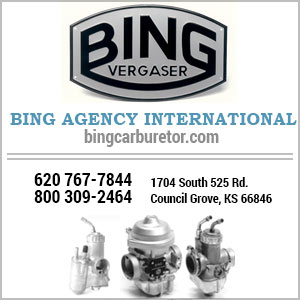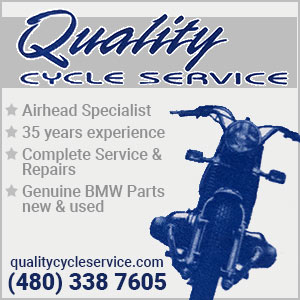Installing Push Rod Tubes
My cylinders were in bad shape (rust on one) so I had them refurbished. When I got them back they look great and then I realized the push rod tubes and top studs were removed. What reading I've done this morning on Snowbum's site states that the dimension from the collar to the cylinder must be maintained. I have no idea what that is and am left wondering how to reinstall them and/or replace with SS tubes (wasn't planned). Does anyone have any experience with a situation like this?
1971 R75/5
Thanks
Mark
Hey mark999 - what did you end up doing?
I have my top end apart and am interested in the answer to that as well.
I got some help from the MOA. Someone who has Oak's top end manual shared an image of their placement. The stop collar should be even with the bottom flange of the cylinder. It was a pain to do though. The cylinder has to be heated to 250F at least. Problem I had was the second I put the torch down it would cool down quickly and seize the tube either crooked or incomplete. Once I understood that, I heated it up higher and was able to get it done. Of course, testing for leaks will be way down the road.
Thanks for the reply. I too set them flush and tonight installed one of the cylinders on the engine. There was a lot of compression on the seals as I had to push them down with nuts on the head without rockers to get them down enough to install the rockers correctly. I'll leave it be and if they split 3 years from now, I'll fix it then.
Thanks for the link to your work. Wish I could have read it earlier.
Mark
Well, I'm glad I happened across this thread. So thanks guys.
The tubes look ok so I wasn't going to do anything with them, but out of curiosity, I checked their depth with respect to the flange. The intake tube was a good 6 mm below the flange while the exhaust tube was 3-4. No effing wonder I had a seal leak!
Per the previous Owner, a reputable shop in Denver "did the top end" in 2011...no idea if they were installed this way or if they migrated.
For grins, I placed a 12 mm socket at the top (head end) of the tubes and gave a couple of moderate taps and the tubes are where I want them. (No deformity to the tube ends).
No heat...Whaddaya guys think?
Should I order new tubes or give it a try with the Green loctite?
It used to be standard shop practice to drive the PR tubes into the seals 1 or 2mm rather than replace them at the first signs of leakage. Trouble is, no one ever thinks to drive them back out again.
Owning an old Airhead is easy.
Keeping an old Airhead running great is the true test.
Hey Wobbly (is that a reference to a SWB /5?)
So whaddaya think? Green loc-tite 'em and go for it, or is the no heat drive-ability a problem warranting new tubes?
• I believe the installation of the PR tubes that we've been discussing is common to all /5 and later Airheads.
• Most of the LocTite thread lockers turn loose at elevated temperatures, so I don't think this is a good application for any of them. Now, LocTite sealants (aka "gasket makers" like 510) might be another story entirely. I'm simply not familiar enough with the PR tube details to answer.
•
...or is the no heat drive-ability a problem warranting new tubes?
Sorry, I'm not following your thought process in this statement. Are you talking about driving the PR tubes in/out, or driving the bike after everything is assembled ?
Owning an old Airhead is easy.
Keeping an old Airhead running great is the true test.
Yeh, sorry Wobbly - Drive-ability was the wrong word here: (I tend to make up words that only make sense to me)
I was concerned about the ability to move (drive) the push rod tubes with no heat - since most of what I've seen indicates they're a pain in the ass even WITH heat.
Thanks Scott, - I'm leaning toward trying the Loctite 290. If it doesn't work and I have to do the job again, it'll be an excuse to mic the whole thing out and check the bottom end while I'm in there.
I'll letcha guys know what happens.
I used a drift I purchased from Bench Mark Works and I was able to make adjustments easily without heating the cylinder.
I have to replace one of my push rod Tubes. Should I assume that I have to heat the head to remove it?
Skip
In lieu of other knowledgeable input, I would say from my experience working on motorcycle cyl heads (admittedly none of which was carried out on BMW cyl heads) that evenly applied heat always makes any task easier. The TASK is easier, but physical handling then becomes a huge issue. You'll want to get a pair of those insulated gloves used for BBQ or welding, because you DO NOT want to drop a cyl head !!
Best way is to boil the cyl head in a large pot of water. That applies VERY even heat and assures that you don't go too high.
You'll have about 5 minutes max to do your work, so a "dry run" with the cool head would be in order.
Hope this helps.
Owning an old Airhead is easy.
Keeping an old Airhead running great is the true test.
- 27 Forums
- 1,952 Topics
- 11.1 K Posts
- 8 Online
- 11.9 K Members





